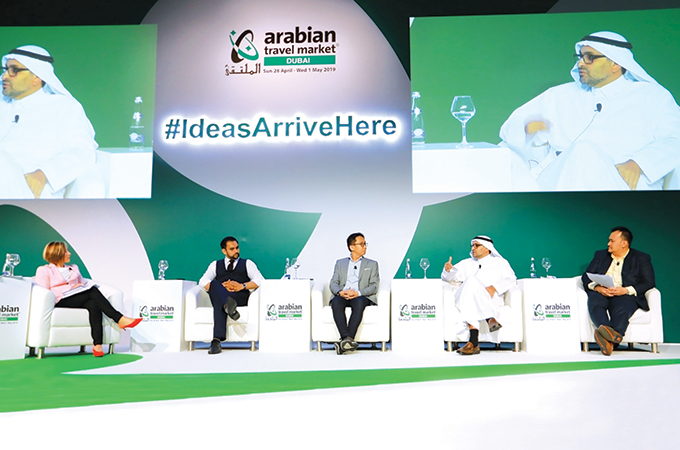
Halal tourism is changing the dynamics of the tourism industry, with the GDP impact of Muslim travel in the Middle East on course to hit $36 billion by 2020 – up from $30.5 billion in 2017, according to Salam Standard, an online hotel reference tool dedicated to Muslim travellers.
Gulf hospitality operators looking to increase their share of the growing halal tourism market should diversify and digitise their offerings to suit younger generations of Muslim travellers – which make up 50-60 per cent of the halal travel market, according to experts speaking at Arabian Travel Market (ATM) 2019. Representatives from Wego, DinarStandard, Shaza Hotels, Tripfez, Serendipity Tailormade, Mosafer C by Ummah Collaboration, holidayme, Orange County Visitors Association, Cape Town Tourism and Japan National Tourism Organization (JNTO) explored ways to tap into the growing segment of Gen Z and millennial travellers at the Global Halal Tourism Summit 2019, which took place on ATM’s Global Stage in Dubai. Chris Nader, vice president, Shaza Hotels, said: “Gen Z and millennial travellers are setting the trends in halal tourism. So if hotels and destinations want to appeal to this demographic, you have to give them what they want. This is why we are seeing a growth in technology in halal travel.” Industry-wide investment in halal tourism-related travel technology currently stands at approximately $40 million, according to research conducted by DinarStandard. Panellists agreed that this figure is likely to grow further in the future, as younger Muslim travellers continue to drive innovation in online services. Mamoun Hmedan, managing director – Mena and India, Wego, said: “There are new destinations popping up out of nowhere. Developers are building properties from scratch, with halal-friendly offerings that are designed to appeal to younger generations of Muslim travellers. “Wego does a lot of work on social media and collaborates with tourism boards to educate people about the opportunities available to them when they travel.” However, one major challenge that all players in the halal-tourism spectrum face is how to define halal travel. According to the panellists, the definition of halal-travel differs for Muslim travellers from Asia and the Middle East. “Muslim travellers from Asia are interested in ’true’ halal-friendly destinations and look for that branding when travelling. Travellers from the Middle East, however, do not like the jargon ‘halal-friendly’ or ‘Muslim-friendly’. Even though their concerns are the same [halal food, prayer facilities etc.], they don’t like the obvious terminology being thrown at them,” the panellists voiced. “Hence it is necessary to adapt the language to the audience,” they said. “Defining halal travel, especially in the tech space, is not easy; but once defined, it can unlock immense potential for growth,” Hmedan said. According to figures released by Salam Standard, approximately 41 per cent of Muslim travellers’ global outbound spending comes from the UAE and Saudi Arabia, with the Middle East’s total outbound spend projected to grow to $72 billion by 2020.